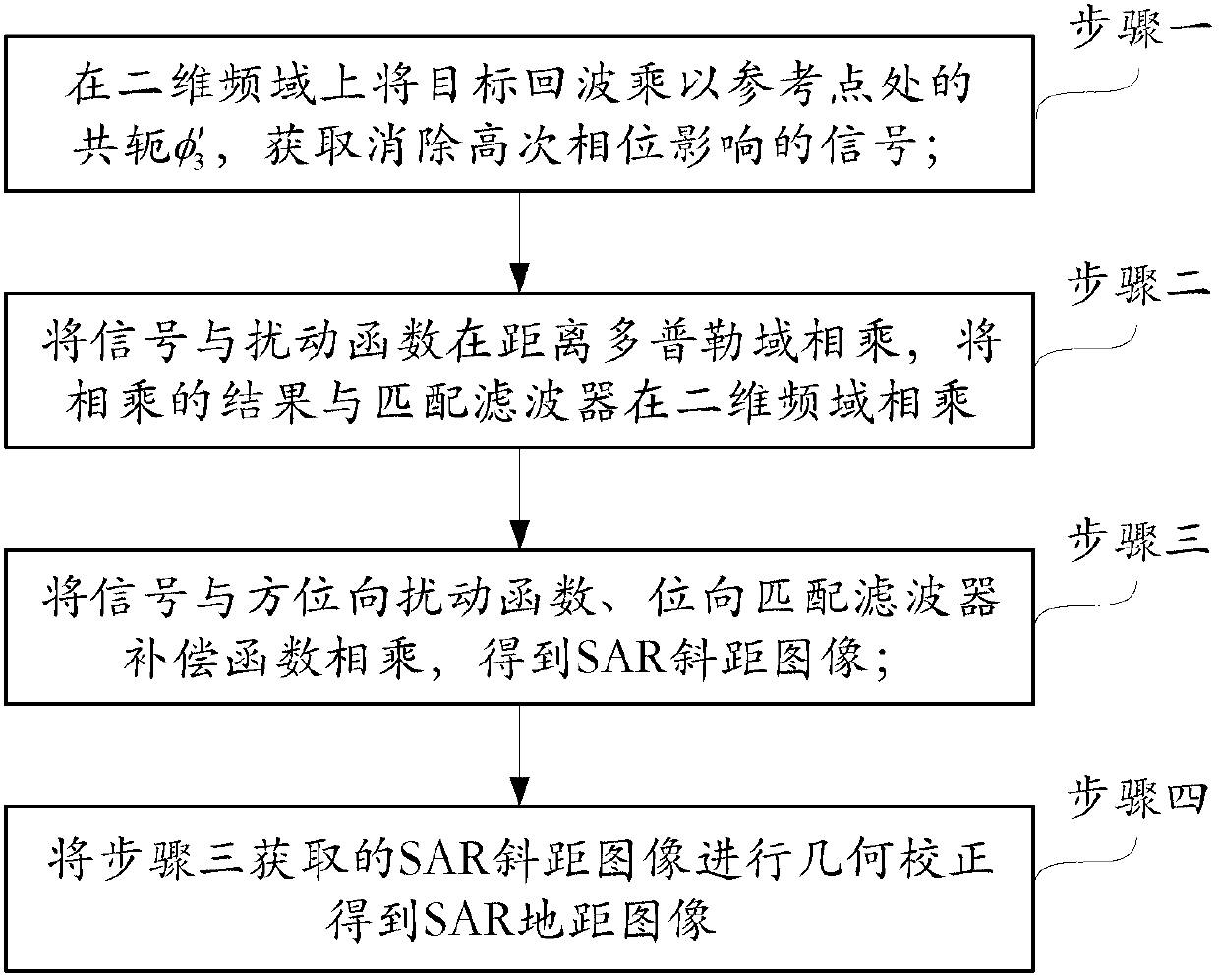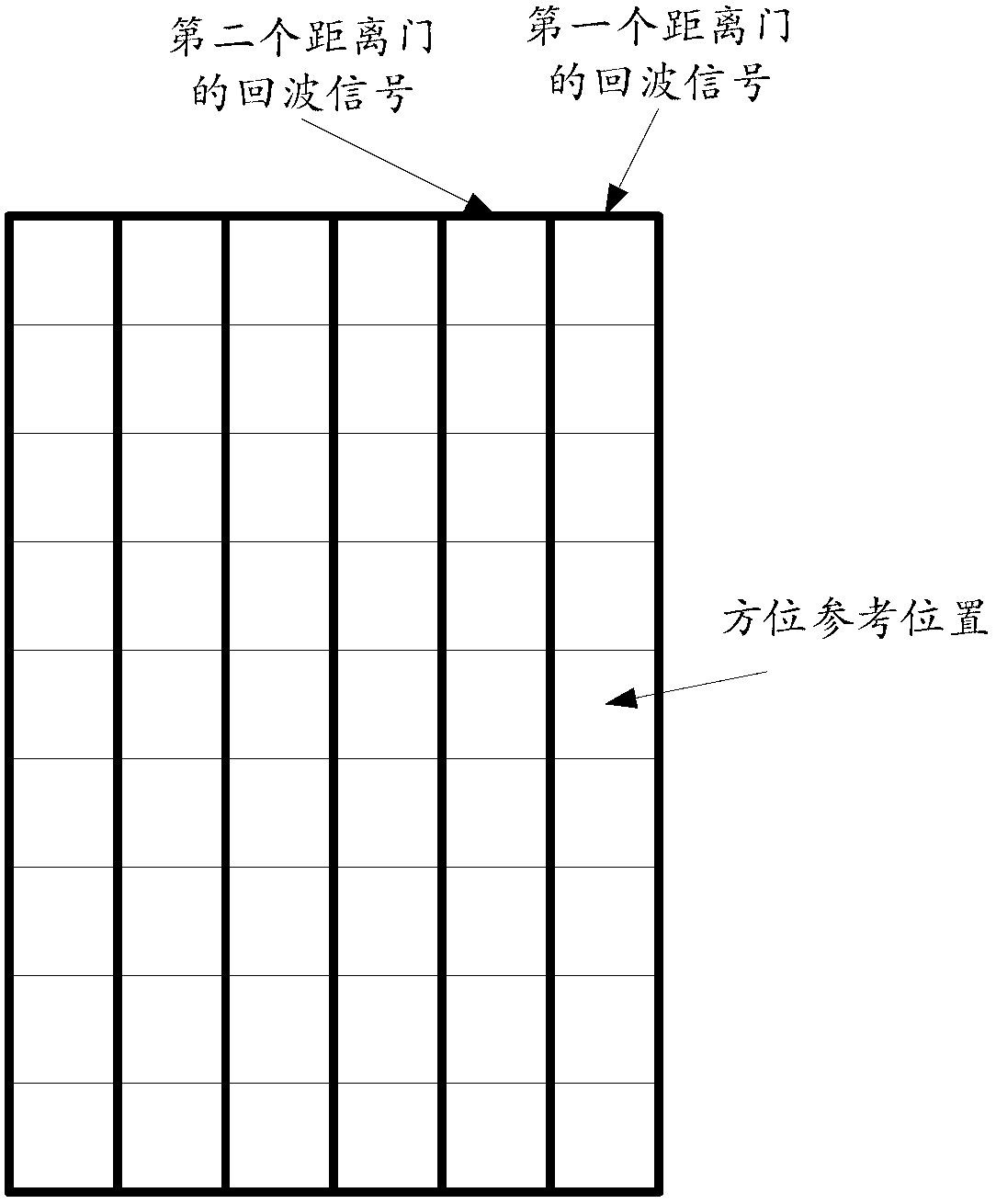Improved double-base synthetic aperture radar NLCS imaging algorithm
A synthetic aperture radar, bistatic technology, applied in the direction of reflection/re-radiation of radio waves, use of re-radiation, measurement devices, etc., can solve the problems of distance-to-frequency modulation, two-dimensional space variability not considered, secondary model failure, etc.
- Summary
- Abstract
- Description
- Claims
- Application Information
AI Technical Summary
Problems solved by technology
Method used
Image
Examples
Embodiment Construction
[0067] The method of the present invention will be further described in detail below in conjunction with the accompanying drawings and embodiments.
[0068] This embodiment adopts the fixed mode of two bases and one station, the satellite is used as the transmitter, and the fixed receiver is placed on the ground. The system parameters are as follows:
[0069] Transmitter operating wavelength λ: L band
[0070] Transmitter speed V: 7200m / s
[0071] Transmit signal distance to bandwidth B r :60MHZ
[0072] Pulse repetition frequency PRF: 1700HZ
[0073] Oblique Angle: 8°
[0074] Receiver height: 1000m
[0075] Scene length: 5000m
[0076] Scene width: 3000m
[0077] Adopt the improved bistatic synthetic aperture radar NLCS imaging algorithm of the present invention,
[0078] Using the right-handed Cartesian coordinate system principle, set the direction parallel to the transmitter track as the y-axis direction, the direction perpendicular to the track as the x-axis dire...
PUM
 Login to View More
Login to View More Abstract
Description
Claims
Application Information
 Login to View More
Login to View More - R&D
- Intellectual Property
- Life Sciences
- Materials
- Tech Scout
- Unparalleled Data Quality
- Higher Quality Content
- 60% Fewer Hallucinations
Browse by: Latest US Patents, China's latest patents, Technical Efficacy Thesaurus, Application Domain, Technology Topic, Popular Technical Reports.
© 2025 PatSnap. All rights reserved.Legal|Privacy policy|Modern Slavery Act Transparency Statement|Sitemap|About US| Contact US: help@patsnap.com



